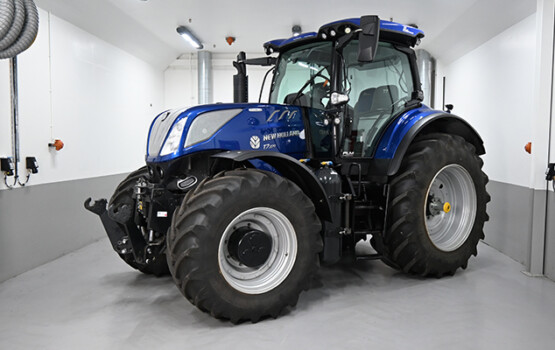Portal for more climate-friendly mobility
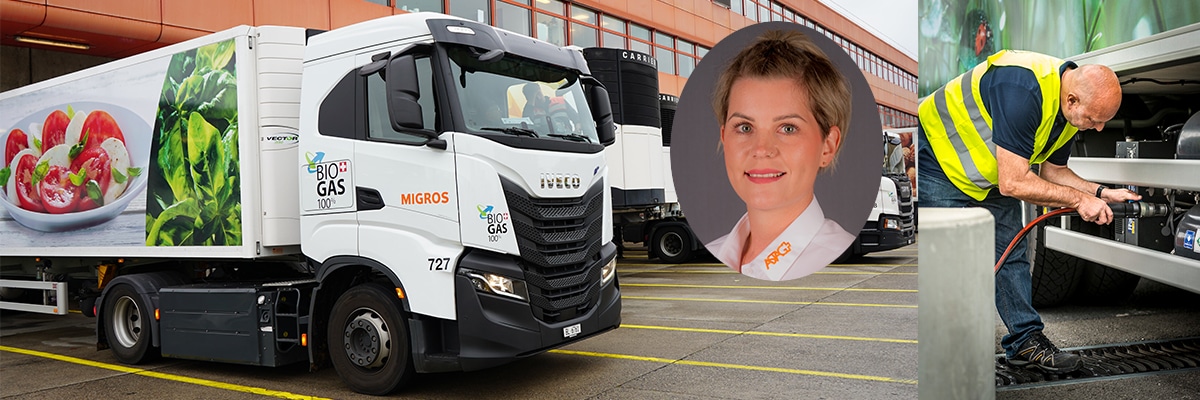
Success through engagement
With “We go green!,” the Swiss Road Transport Association Astag wants to make its contribution to the environment and climate. Astag contact person, Stefanie Katic, explains exactly how this should work. It reveals which measures the individual Astag members involved in freight and passenger transport can take to improve the carbon footprint of road transport both effectively and cost-effectively.
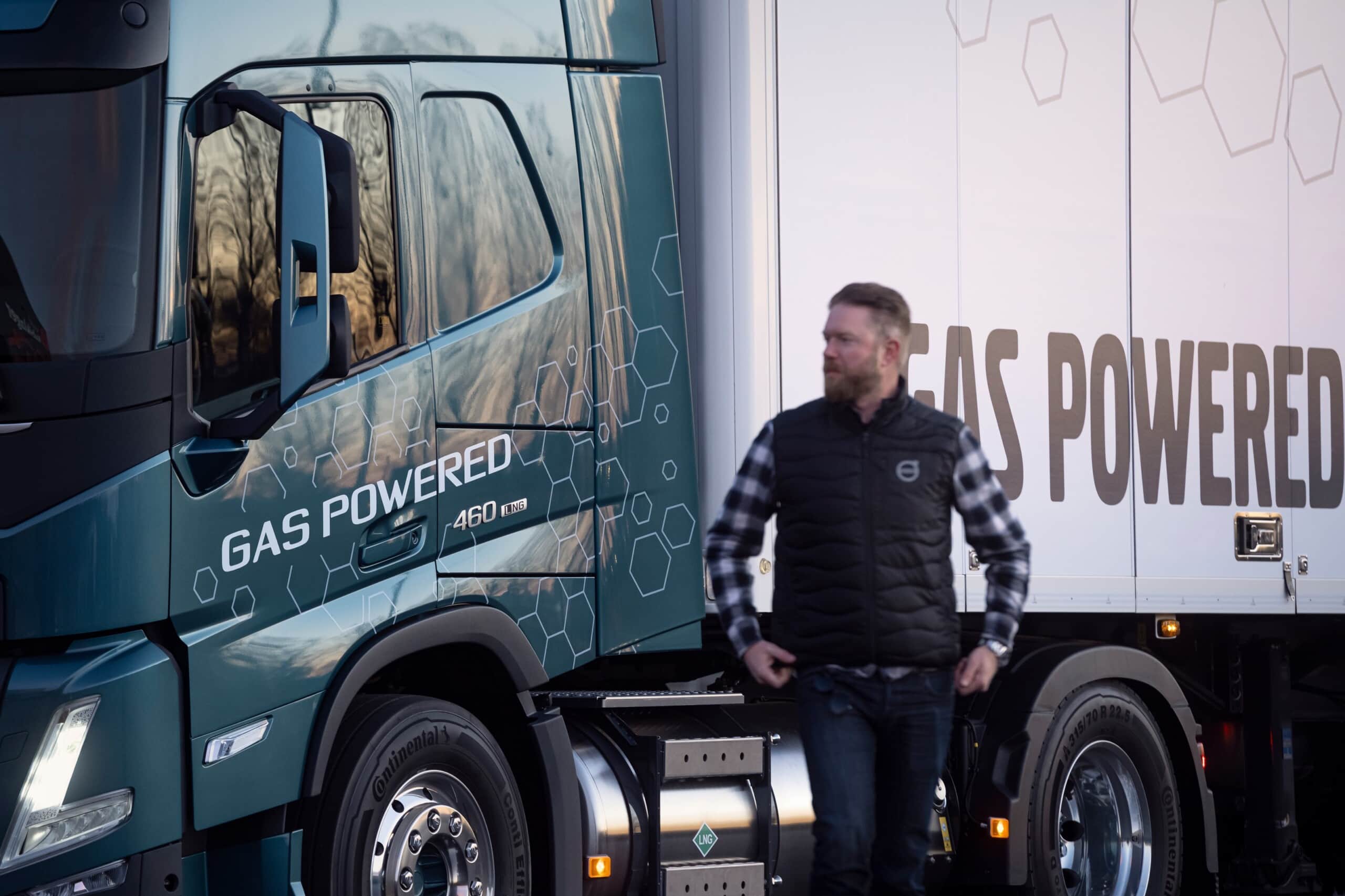 CNG and LNG powertrains – as on this Volvo truck – are one way to rapidly decarbonise freight transport. Source: Volvo
CNG and LNG powertrains – as on this Volvo truck – are one way to rapidly decarbonise freight transport. Source: Volvo
In a resolution passed in 2021, the Swiss Road Transport Association (Astag) committed to reducing CO2 emissions by 50% compared to 1990 by 2030. According to the greenhouse gas inventory of the Federal Office for the Environment (FOEN), this means that the road transport industry will only emit around one million tonnes of CO2 in eight years – always in relation to journeys from A to B. Today, it emits just under 2.25 million, so there is still a long way to go and the target is quite ambitious. However, Astag Central President, Thierry Burkart, is confident that this will be possible thanks to a joint effort by the industry. To help its members on the path to decarbonisation, its association launched the campaign “We go green!”.
The intention behind this is to take effective measures on a voluntary basis. In all business activities of transport companies, greenhouse gas emissions should be reduced wherever possible – with practical, sensible measures at an affordable cost-benefit ratio. Astag also deliberately focuses on measures that can be implemented by both small and medium-sized companies and large transport companies.
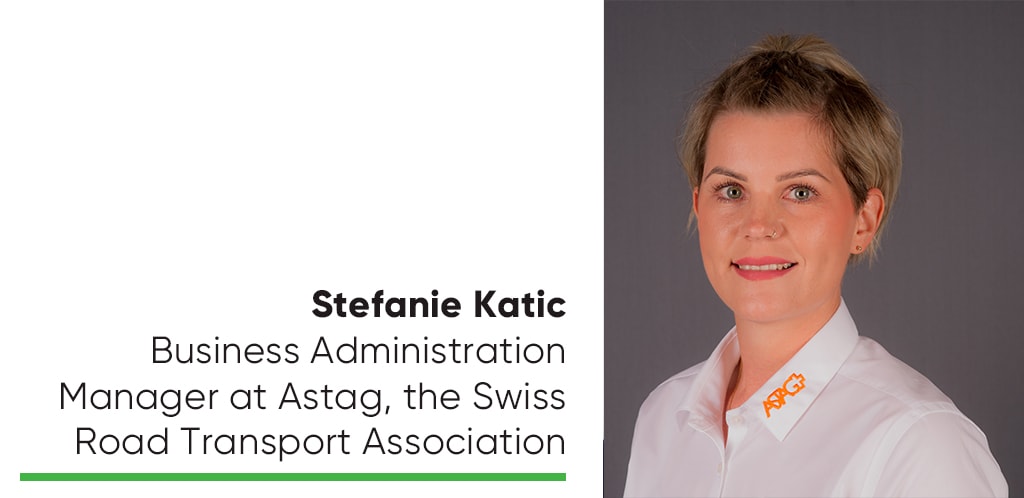
Ms Katic, the “We go green!” campaign is voluntary for members. How do you ensure that as many people as possible take part?
Stefanie Katic, Business Administration Manager at Astag, the Swiss Road Transport Association: Transport companies are already making an enormous contribution – but there is still not enough public awareness of this! Did you know that, thanks to ongoing fleet renewal, more than 95% of all tonne-kilometres are now covered by state-of-the-art commercial vehicles that comply with the Euro 5 and Euro 6 standards? As a result, pollutant emissions have fallen to almost zero, and the share of heavy transport in Switzerland’s total CO2 emissions is just under six per cent. As a first step, we want to ensure that members declare the current status of their CO2 measures and disclose them transparently. In a second step, our members are invited to implement additional measures. This primarily involves measures that are directly and specifically tailored to the operation and its peculiarities and can be implemented.
With the new website for “We go green!”, you have created a platform for the implemented measures and, in return, award a climate label – how does the whole thing work exactly?
First and foremost, this is not about a label that is awarded. We have created a logo that members can use to inspire and raise awareness of the engagement of external people such as customers, the public and politicians. However, a label in the sense of a “quality certificate” does not exist. Members can register on the website and declare their CO2 measures using a form created for this purpose. You will then be authorised to use the “We go green!” logo.
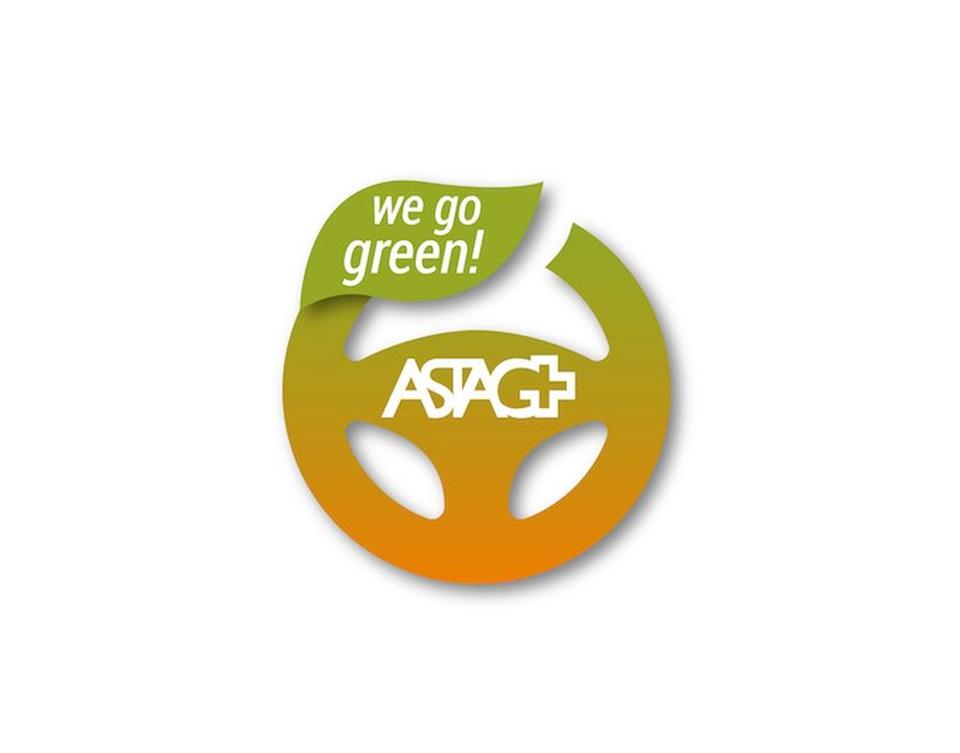
Source: Astag
Climate measures or conversions from diesel to alternative engines initially cost the haulier, who has to make tough calculations, an arm and a leg. But are these investments still worthwhile?
As things currently stand, vehicles with alternative engine systems are certainly very costly to acquire. Small businesses have so far been unable to afford such investments, as some of them lack the necessary resources. Astag therefore advocates start-up financing, so that alternative drive systems become a real “alternative” for as many companies as possible.
You are proposing an impressive 34 measures as part of “We go green!”. What are the most important ones?
It goes without saying that they all play an important role. Every contribution or each individual measure implemented helps to improve the CO2 footprint. However, only measures that have an impact on CO2 emissions during business operations – i.e. primarily during the transport process – are relevant to the achievement of targets. The main areas of consideration are vehicle procurement, vehicle use and fuel consumption. The more companies are active in these areas, the more likely it is to achieve the target reduction of minus 50%. Incidentally, the most important key figure for measuring CO2 emissions in the industry is the annual greenhouse gas inventory published by the Federal Office for the Environment.
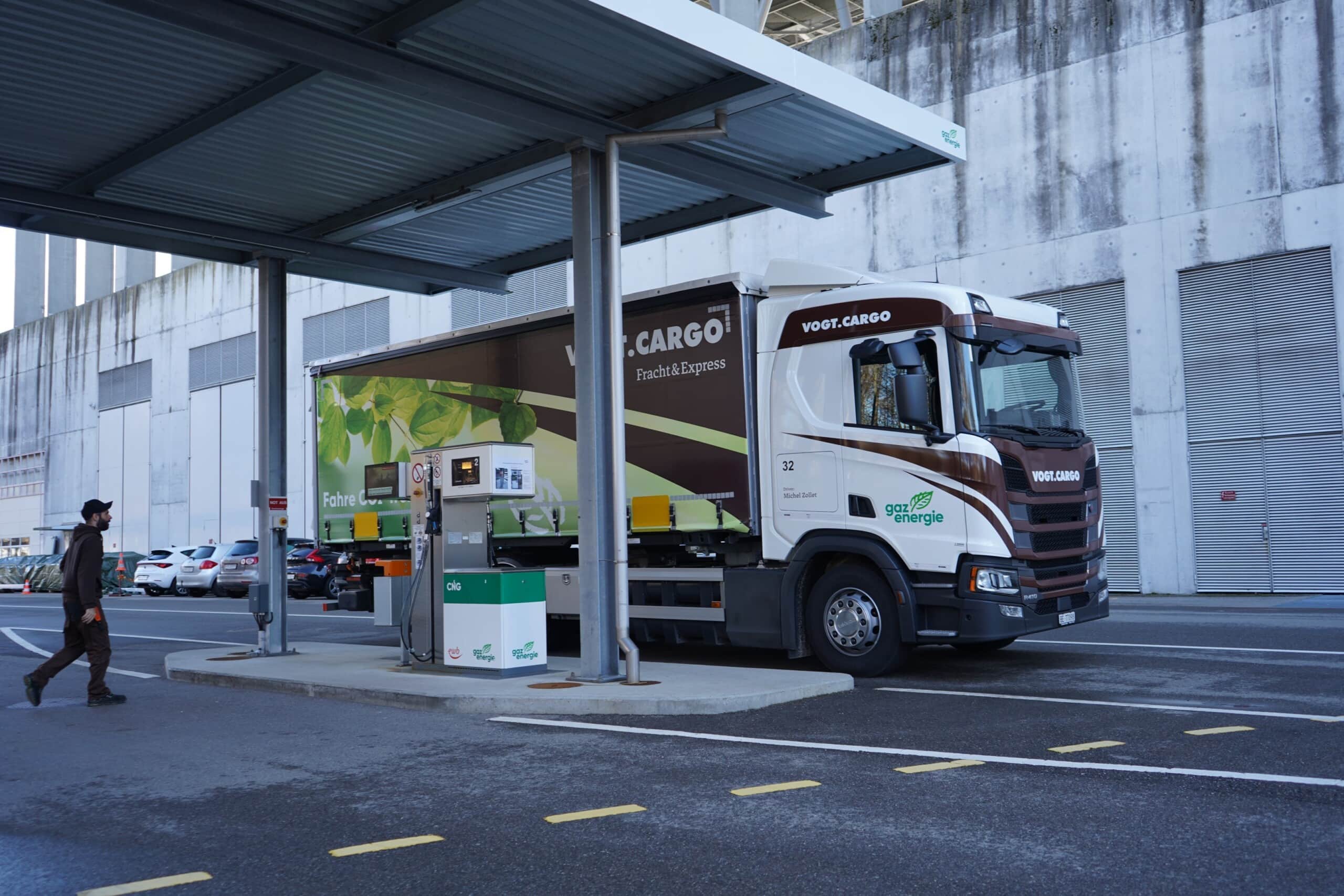 The Bernese SME Vogt Cargo is setting an example: the freight and express specialist fills up with biogas for its general cargo and logistics tours and is thus almost CO2-neutral on the road. Source: CNG-Mobility.ch
The Bernese SME Vogt Cargo is setting an example: the freight and express specialist fills up with biogas for its general cargo and logistics tours and is thus almost CO2-neutral on the road. Source: CNG-Mobility.ch
Not every transport company can afford an expensive e-truck, for example. What other options are there?
CO2 emissions can be reduced not just by purchasing a new vehicle: by simply improving route planning, avoiding unnecessary ballast such as snow chains (in summer), unnecessary additional equipment (forklift trucks, etc.) and superstructures, it is possible to reduce fuel consumption and thus minimise CO2 emissions.
How do you see the role of CNG and biogas vehicles on the road to more sustainable freight transport?
As a matter of principle, Astag takes a technology-neutral approach to types of commercial vehicle engines. The advantages and disadvantages must always be determined based on the peculiarities and requirements of the respective company, so it is not possible to make general statements. Synthetic fuels are currently already used in trucks and articulated lorries. Throughout Europe, Switzerland is considered a pioneer country when it comes to alternative engine systems.
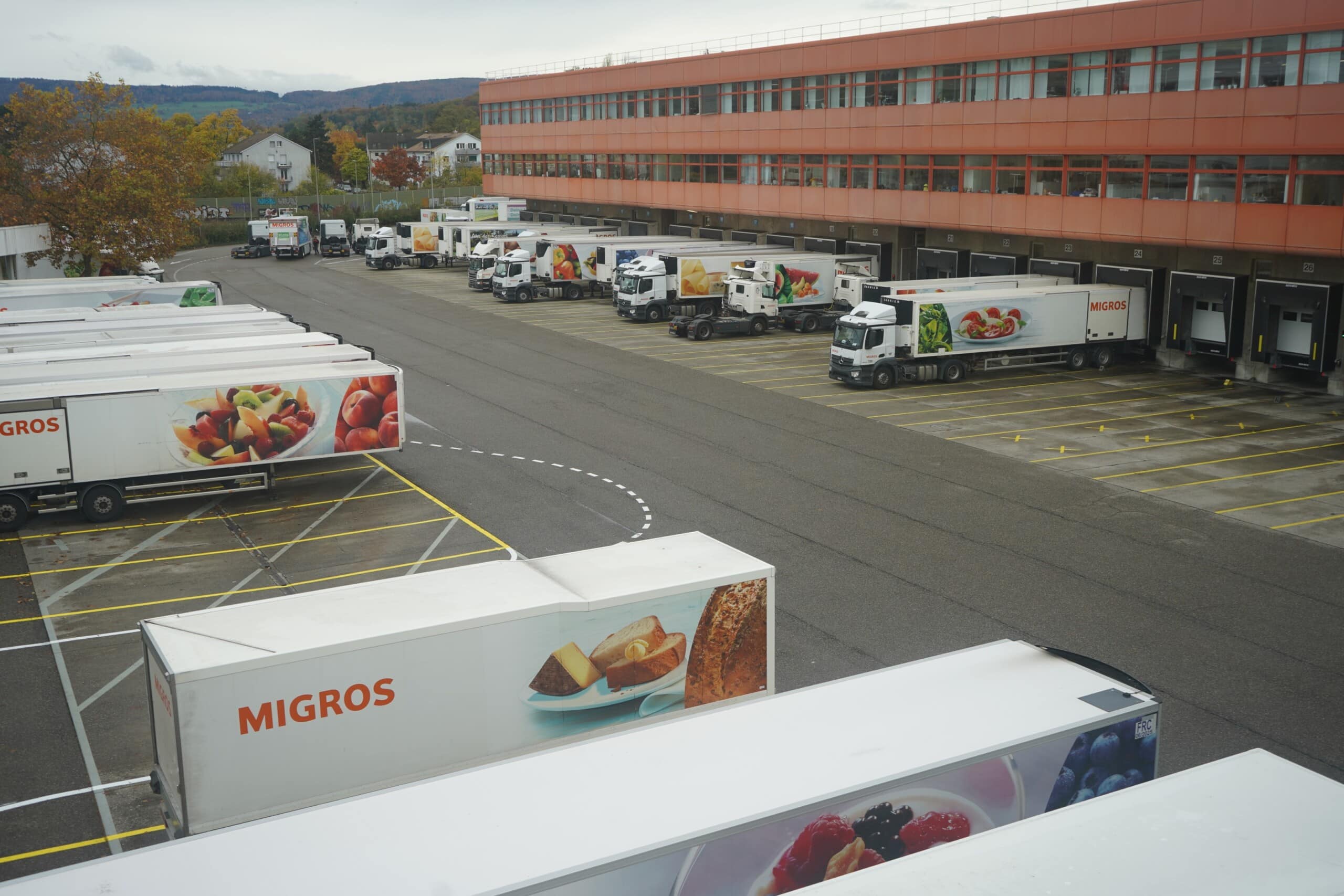 The Migros Basel cooperative already adopted a new mobility strategy in 2017 to make its daily transports more climate-friendly. Source: CNG-Mobility.ch
The Migros Basel cooperative already adopted a new mobility strategy in 2017 to make its daily transports more climate-friendly. Source: CNG-Mobility.ch
How important is the amendment of the performance-related heavy vehicle charge (HGVC), where biogas will also benefit from a reduction in the future?
First of all, it is important that the medium-term structure of the HGVC is technology-neutral. The decisive factor is the parliamentary resolution of 9 March 2021 that all commercial vehicles with emission-free engines should benefit from a reduction in the HGVC for the time being (see Mo. 19.4381). But it’s not just the engine technology that plays a key role. As already mentioned, start-up financing for commercial vehicles with alternative engines is absolutely crucial for the functioning of the system.
How exactly do you advise Astag members on sustainability?
A list of measures should be used to show members what options exist for reducing CO2 emissions in their own operations. The measures were defined more precisely with the help of an external sustainability expert. On the Astag website, members can find, for example, a comparison of the advantages and disadvantages of the individual alternative engines including comments from experts.
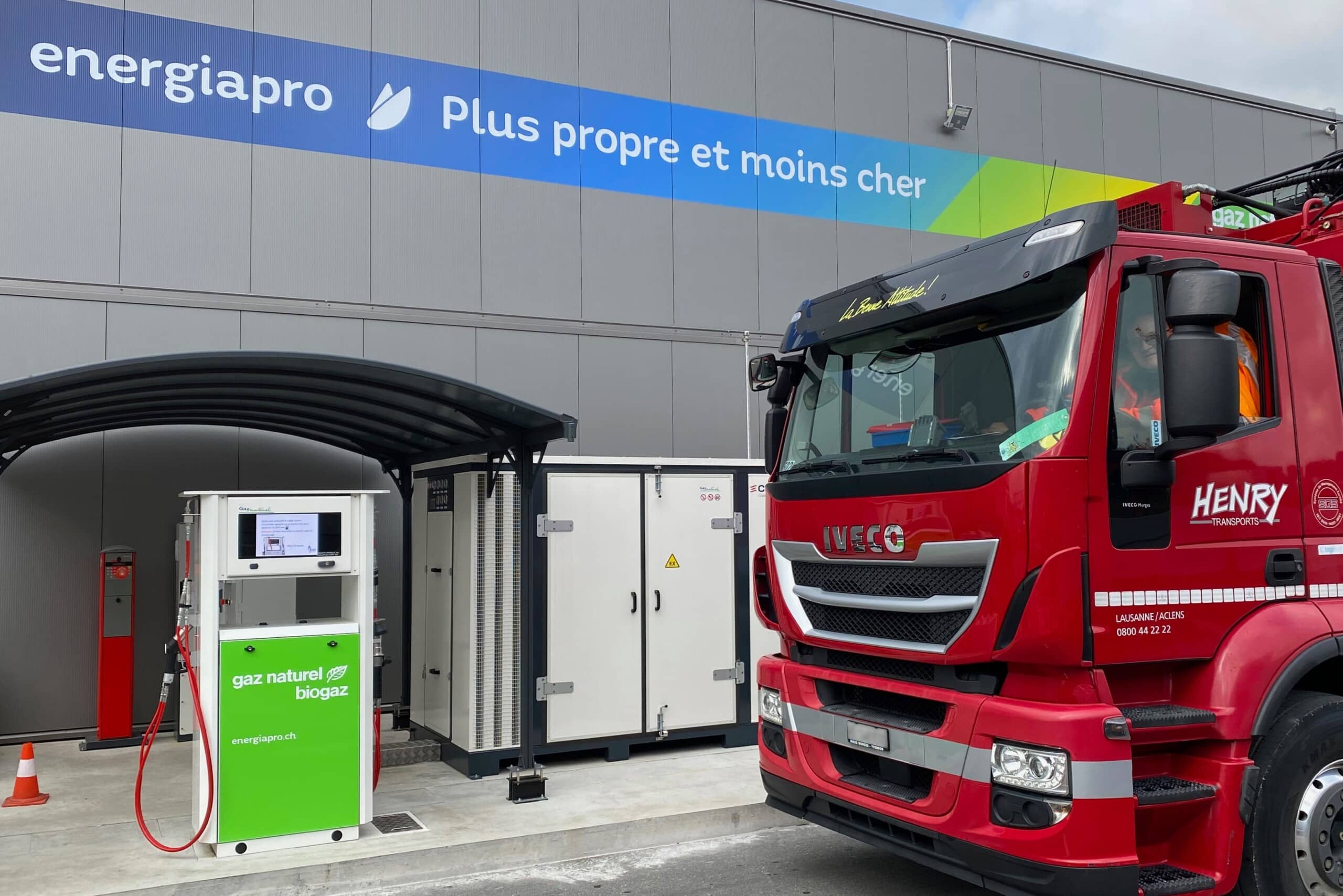 The new CNG filling station in Vufflens-la-Ville VD has been supplying climate-friendly fuel to Henry Transports SA vehicles, among others, since last summer. Source: Holdigaz
The new CNG filling station in Vufflens-la-Ville VD has been supplying climate-friendly fuel to Henry Transports SA vehicles, among others, since last summer. Source: Holdigaz
What other aids or further training courses does Astag make available to its members?
We are continuously expanding our educational offering and services in line with the latest trends. In doing so, we cater to the wishes and needs of the industry, but also to innovations and the latest technologies. In doing so, we focus on sensibly combining the corporate benefits and the contribution to the environment and climate, so that voluntary engagement is made possible in the first place. In the “QualyDrive” course at Astag, for example, we accompany our members on their way to increasing efficiency and saving fuel. This not only benefits members, but also ultimately the environment and climate. (jas, 19 April 2022)
You might also be interested in
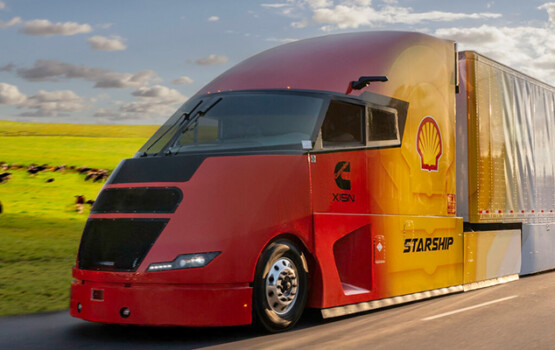
Shell Starship on record hunt
